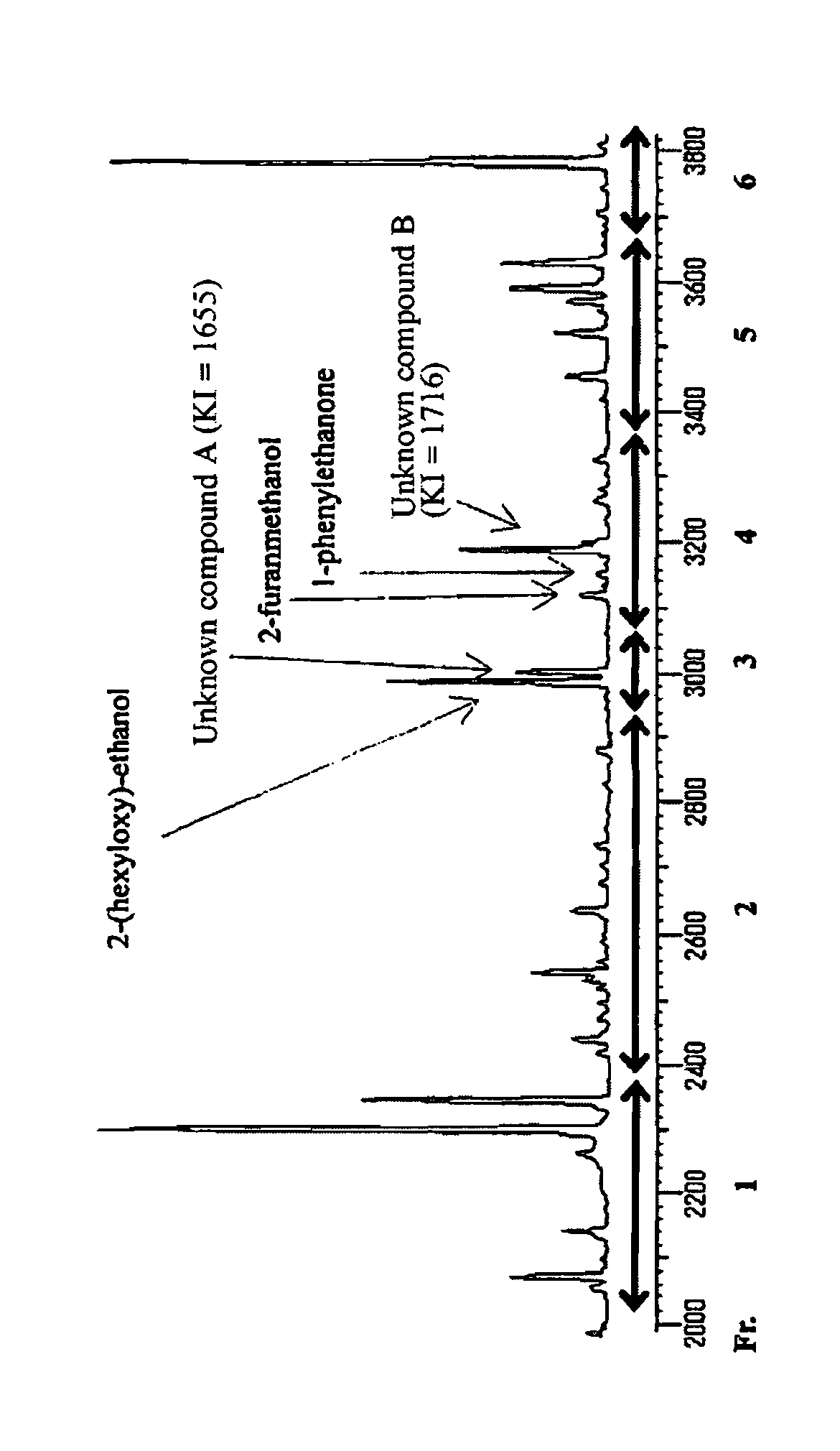Solid composition containing lipids from crustaceans
a technology of crustaceans and solids, which is applied in the field of phospholipids, contained in crustaceans, can solve the problems of low content of phospholipids in raw materials, difficulty in cost, and difficulty in purification, and achieve the effect of simple and inexpensive production of lipids and low ash conten
- Summary
- Abstract
- Description
- Claims
- Application Information
AI Technical Summary
Benefits of technology
Problems solved by technology
Method used
Image
Examples
example 1
Preparation of Squeezed Liquid of Krill (by a Batch Method) and a Heating Treatment
[0055]Antarctic krill of at least 45 mm length (400 kg) collected in the Antarctic Ocean in late July of 2005 followed by an immediate freezing at −30° C. was thawed by airing at room temperature (15° C.). The thawed krill was squeezed using an oil hydraulic squeezing machine (manufactured by Tokyo Techno; material cell=about 2 cm′ about 68 cm′ about 40 cm height) with a squeezing rate (yield of the squeezed liquid to the supplied amount of the thawed krill) of 13% by weight (lot 1) or 26% by weight (lot 2). The squeezed liquid was combined with the previously prepared thawed drips and heated in a steaming type heating kettle (kneader) having a capacity of 1 ton. The heating was stopped when the temperature reached to 95° C. and the resulting thermally coagulated product (a solid containing lipids) was classified using a commercially available sieve basket made of stainless steel by means of a natural...
example 2
Preparation of Squeezed Liquid of Krill (by a Screw Press) and Heating Treatment
[0060]The same krill as in Example 1 was thawed by airing at room temperature (8° C.) and the thawed drips were removed therefrom. The resulting thawed hill was placed in a screw press dehydrating machine (manufactured by Fukoku Kogyo; type SHZ-200′ 1.5 ML) and treated with squeezing liquid rates (yields of the squeezed liquid to the supplied amount of the thawed krill) of 17 to 36% by weight to prepare squeezed liquids (lots 3 to 6). About 5 kg of each of the squeezed liquids was heated in a 50 L a steaming type heating kettle (rice boiler), heating was stopped when the temperature was confirmed to reach 95° C. The resulting thermally coagulated product (solids containing lipids) was classified using a commercially available sieve basket made of stainless steel by means of a natural dropping. Yield and components in the resulting thermally coagulated product of each lot are shown in Table 3. The yield i...
example 3
Preparation of Squeezed Liquid from Krill (by a Meat Separator) and Heating Treatment
[0065]10 tons of Antarctic krill of at least a 45 mm length collected in the Antarctic Ocean in mid-July of 2006 was squeezed using a meat separator (manufactured by Baader; type: BAADER 605) immediately after fishing to give 3 tons of squeezed liquid. It was immediately frozen. The frozen squeezed liquid was heated in a steaming type heating kettle and the heating was stopped when temperature reached 95° C. The whole heating product was placed into a centrifugal dehydrating machine (manufactured by Taieiseisakusho; type DT-1) using a filter cloth of 200 meshes and an extract (filtrate) was separated to give a thermally coagulated product (solids containing lipids). Components in the raw material and in the thermally coagulated product are shown in Table 6.
[0066]
TABLE 6ThermallyRaw materialCoagulated ProductWater(wt %)81.660.4Total Lipids(dry wt %)31.746.7Crude Proteins(dry wt %)56.047.0Ash(dry wt %...
PUM
 Login to View More
Login to View More Abstract
Description
Claims
Application Information
 Login to View More
Login to View More - R&D
- Intellectual Property
- Life Sciences
- Materials
- Tech Scout
- Unparalleled Data Quality
- Higher Quality Content
- 60% Fewer Hallucinations
Browse by: Latest US Patents, China's latest patents, Technical Efficacy Thesaurus, Application Domain, Technology Topic, Popular Technical Reports.
© 2025 PatSnap. All rights reserved.Legal|Privacy policy|Modern Slavery Act Transparency Statement|Sitemap|About US| Contact US: help@patsnap.com

